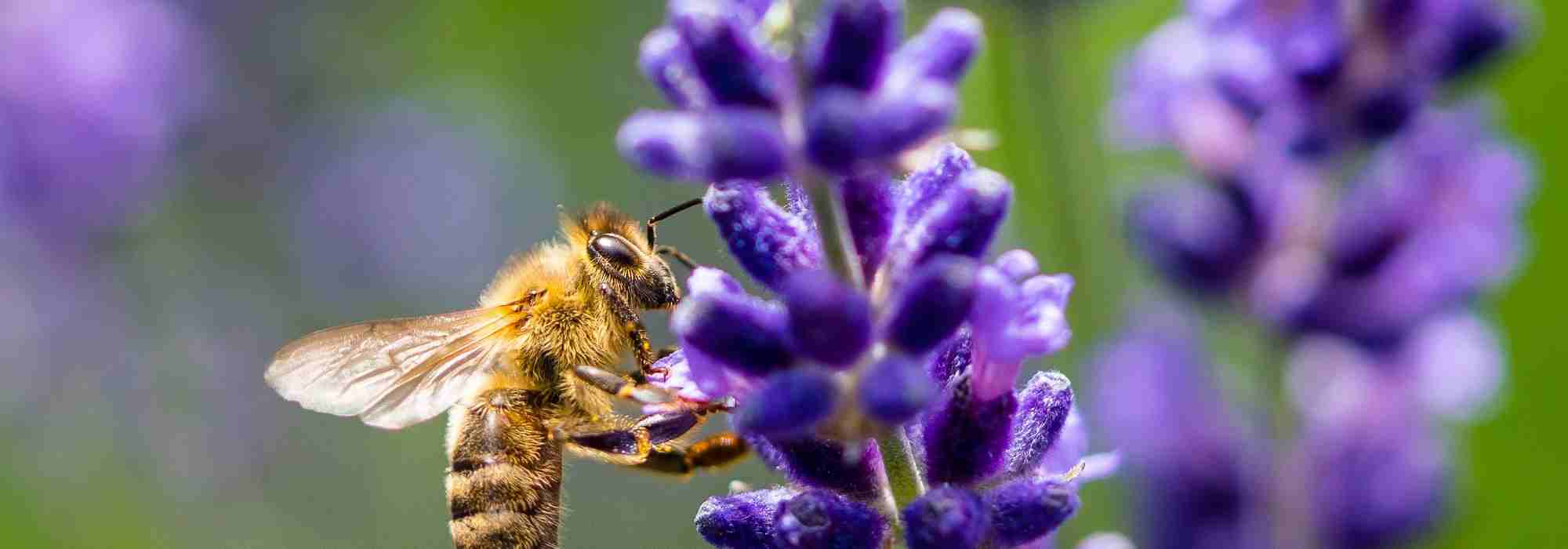
Melliferous Plants and Nectariferous Plants: What Are the Differences?
Two terms not to be confused!
Contents
Picture a bee in mid-flight, darting between flowers under a gentle spring sun. Its goal? To find food for its colony and produce that golden nectar we all love: honey. But not all flowers are equal in the eyes of bees and other pollinating insects. Some plants offer a precious sweet juice, while others merely attract these tireless workers without guaranteeing them a sugary reward. This is where two terms come into play: nectariferous and melliferous.
These two adjectives, often confused, play very distinct roles in the botanical and apicultural world. A nectariferous plant produces nectar, while a melliferous plant contributes to honey production… though not necessarily through its nectar alone. So, what precise differences can we draw between these two concepts? Why are they so important for pollinators and beekeepers?
Nectariferous plants: a precious resource for pollinating insects
Quite logically, the term nectariferous refers to a plant that produces nectar. This sweet liquid, secreted by glands called nectaries, is a veritable source of energy for many pollinators, such as honeybees and solitary bees, bumblebees, butterflies… and, in other latitudes than ours, hummingbirds.
Nectar is somewhat like a reward offered by the flower in exchange for pollen transport. The presence of nectar promotes plant reproduction, as it enables cross-pollination, thus ensuring genetic diversity and species propagation.
However, not all nectariferous plants are equally attractive to pollinators. Several factors come into play:
- The quantity and quality of nectar: Some plants secrete very abundant nectar rich in sugars, while others produce little or with a lower concentration. Among the most nectariferous plants, we can mention the lime tree (Tilia), the field maple (Acer campestre), the black locust (Robinia pseudoacacia), the honeysuckle (Lonicera), the cotoneaster, the raspberry (Rubus idaeus), the ivy (Hedera)… but also the coneflower, the agastache, the wallflower, the borage, the valerian (Centranthus), the sages (Salvia), the hyssop (Hyssopus officinalis)…
- The structure of the flower: A flower with a complex, double or deep corolla structure may limit access to nectar for certain insect species. For example, bees find it easier to forage on open flowers, such as umbels or heads, while butterflies can reach nectar at the bottom of tubular flowers. Thus, the most sophisticated roses, lilac, dahlia, mimosa or tulips are hardly attractive to bees.
- The colour of the flower may also play a role, with pollinating insects preferring yellow and orange, blue and purple flowers.
- Climatic and environmental conditions: Nectar secretion depends on many parameters such as temperature, humidity or even time of day. Prolonged drought can reduce nectar production, thus impacting the entire food chain of pollinators.
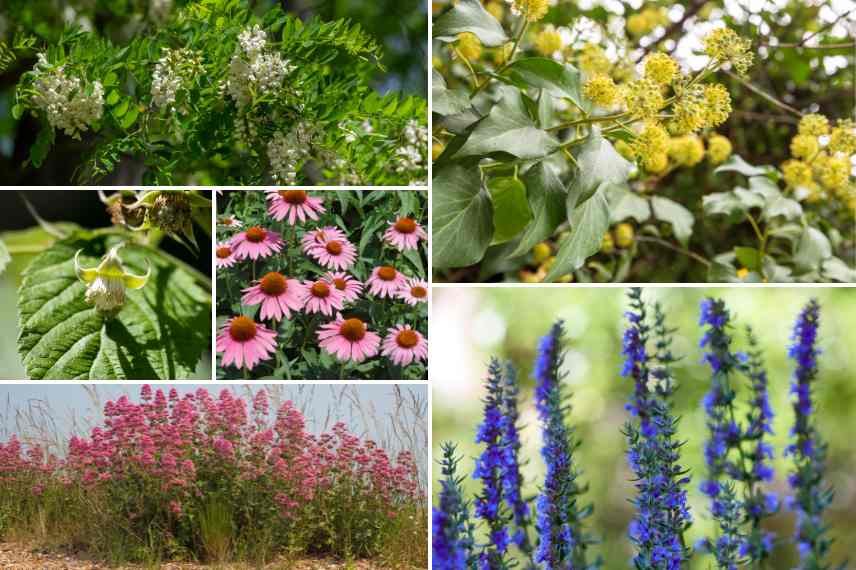
Some highly nectariferous flowering plants (black locust, ivy, raspberry, coneflower, valerian and hyssop)
Thus, a nectariferous plant is essential for pollinator nutrition, but this does not necessarily mean it directly promotes honey production. This is where the notion of a melliferous plant comes in.
Read also
Best melliferous plants by seasonMelliferous Plants: Allies for Beekeepers and Pollinating Insects
To understand what a melliferous plant is, let’s take a quick look at its etymology! “Melliferous” comes from the Latin “mellifer“, formed from “mellis” meaning “honey” and “ferre” meaning “to bear”. Suddenly, the term becomes much clearer. This word therefore refers to a plant that contributes to honey production. Thus, it is not strictly speaking a synonym for “nectariferous”. Indeed, a melliferous plant provides nectar, but also other precious substances for the hive: pollen, honeydew or propolis.
- Nectar, the basis of honey: A melliferous plant can be nectariferous if it produces enough nectar to be harvested by bees and turned into honey. For example, the chestnut tree, the lime tree and the lavender are both nectariferous and melliferous.
- Pollen, essential for the hive: Melliferous plants can also be rich in pollen, a vital source of protein for bee larvae. Certain species, such as the hazel (Corylus) or the willow (Salix), are highly prized by bees in spring for their pollen supply.
- Honeydew, an alternative to nectar: Some plants, such as the spruce (Picea), the fir (Abies), the pine (Pinus), the larch (Larix), the oak (Quercus), the poplar (Populus), the maple… do not produce nectar, but their leaves secrete this sticky, sweet liquid produced by aphids or scale insects. Bees collect it and turn it into honey, like the famous fir honey!
- Propolis, a natural antibiotic: Some plants like the poplar provide a resin that bees transform into propolis, a substance with antimicrobial properties used to protect the hive from infections. But propolis can also be made from the resin of conifers or large trees such as ash trees (Fraxinus), oaks, willows, and birches (Betula).
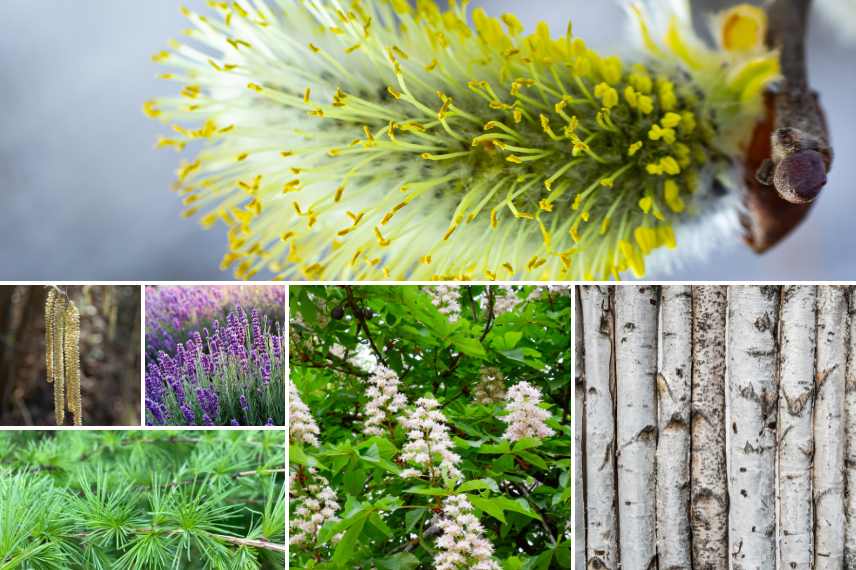
Melliferous plants that produce nectar, pollen, honeydew and propolis (Willow, hazel, lavender, larch, chestnut and birch)
Thus, a melliferous plant is not limited to providing nectar. It plays a key role in the life cycle of bees and the diversity of the honey we consume.
Melliferous and Nectariferous: An Important Distinction for Gardeners and Beekeepers
Understanding the difference between nectariferous and melliferous is essential for anyone looking to promote biodiversity and support pollinators. The difference between a nectariferous plant and a melliferous plant lies in their respective roles: the former provides nectar, an energy source for pollinators, while the latter directly contributes to honey production and the proper functioning of hives. While all melliferous plants are nectariferous, the reverse is not always true! This delicate balance between nectar, pollen, and honeydew shapes the richness of the beekeeping world and the diversity of our ecosystems.
For Gardeners
Planting nectariferous flowers attracts a multitude of pollinating insects and enhances the pollination of crops, thereby increasing the production of fruits and vegetables such as cucurbits (zucchinis, squashes, melons…).
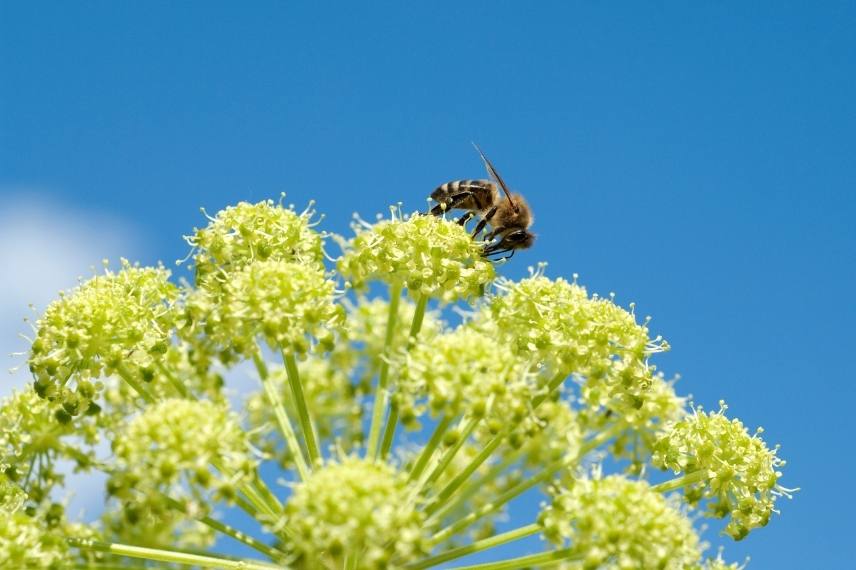
A bee foraging on an angelica flower
Choosing melliferous species also provides bees with a diversity of food resources, essential for their health and survival. This is why it is crucial to prioritise flowering periods spread over time (from spring to autumn) to ensure a constant food source for insects.
For Beekeepers
Encouraging melliferous plants ensures good honey production and other resources useful to the hive, which are sources of income for beekeepers and well-being for their bees. This is why it is important for beekeepers to know the flowering periods of local melliferous plants to anticipate colony needs and avoid periods of scarcity.
Thus, beekeepers play a vital role in preserving plant biodiversity around hives. This is a crucial challenge in the face of declining bee populations.
- Subscribe!
- Contents
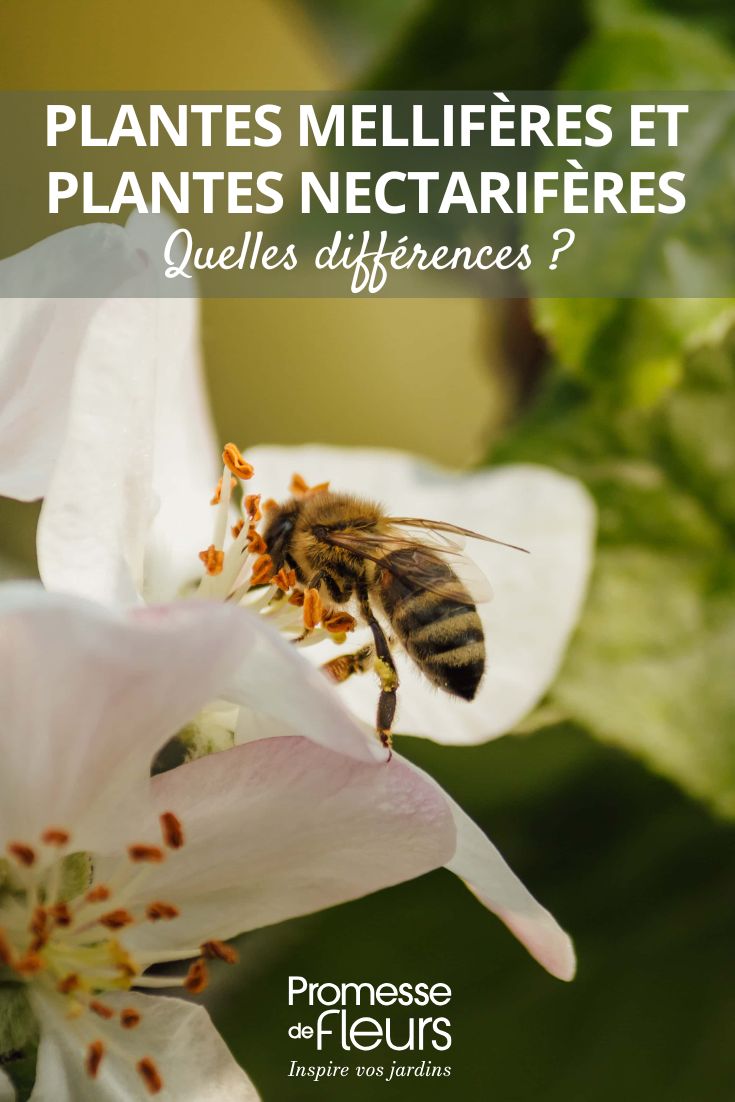































Comments